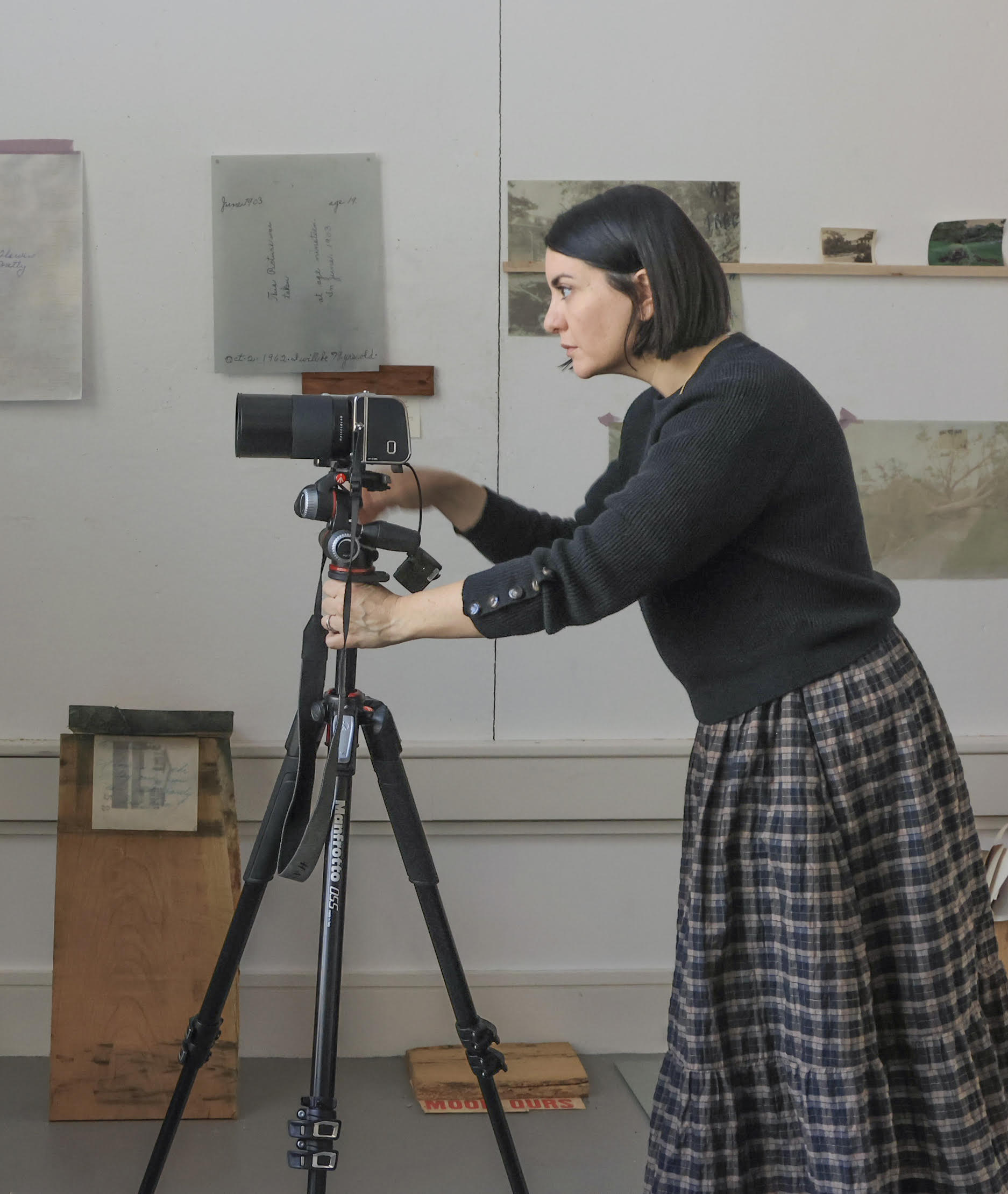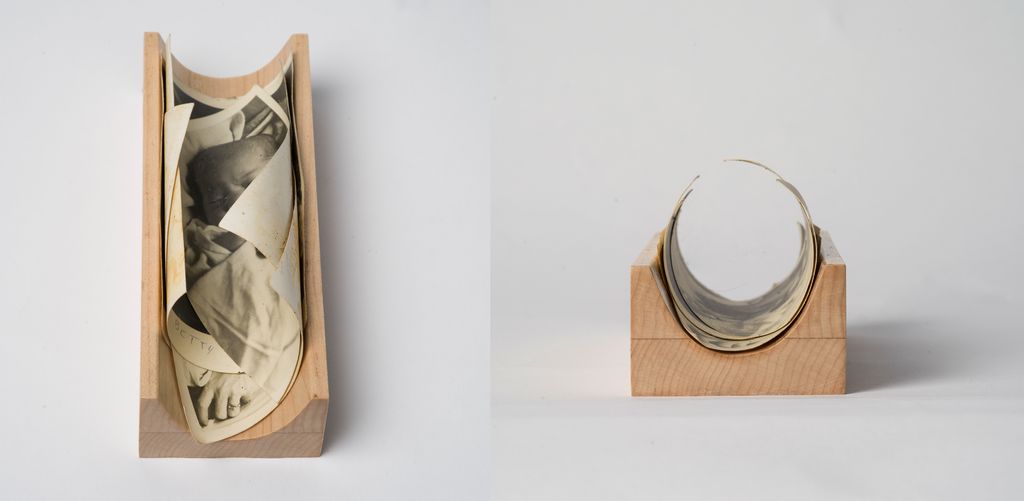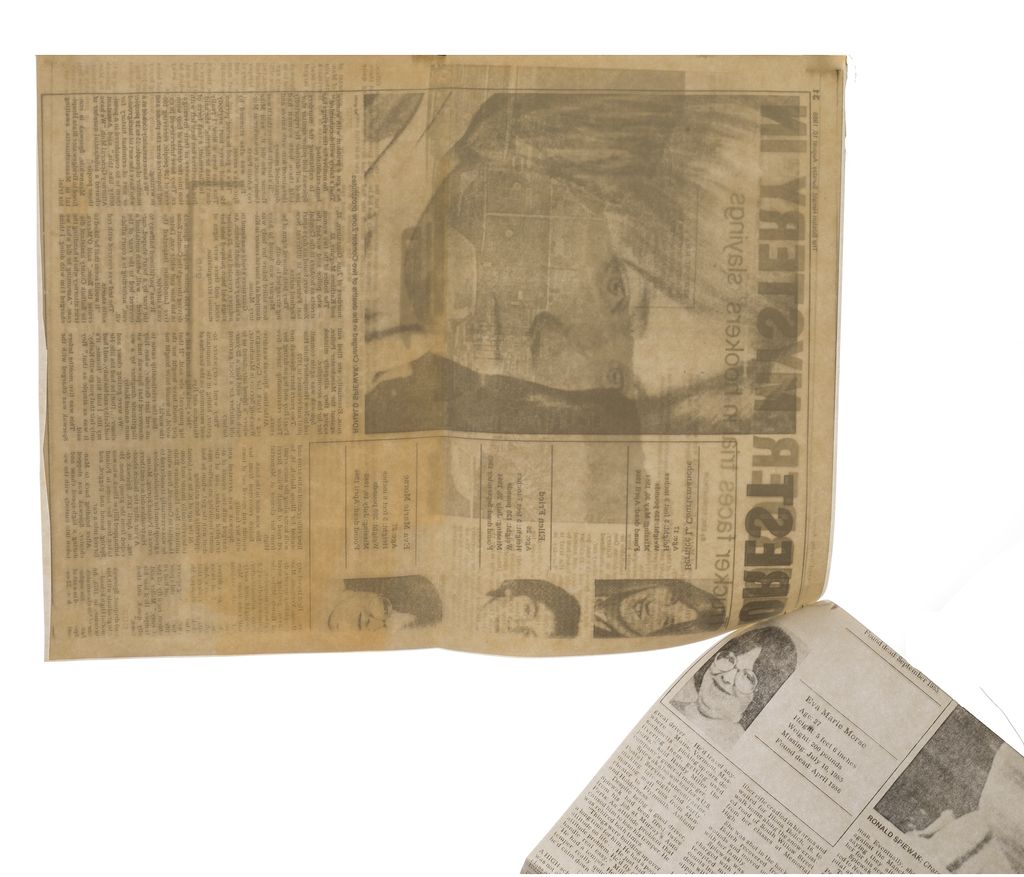Creatives in Practice: Toni Pepe
BU's Chair of Photography and Associate Professor of Art is an artist-in-residence at the Boston Public Library’s Special Collections, where she focuses on the material life of photos and clippings that document women in the media

CREATIVES IN PRACTICE: TONI PEPE
Boston University’s Chair of Photography and Associate Professor of Art is an artist-in-residence at the Boston Public Library’s Special Collections, where she focuses on the material life of photos and clippings that document women in the media.
One thing that gravitates the next generation of artists to Boston University College of Fine Arts? Knowing that their professors, advisors, and mentors are also working artists, gaining real-world experience and bringing that back into the classroom through their curriculum, lessons, and talks. In CFA’s Creatives in Practice series, your favorite CFA faculty and staff members share the work they’re doing off campus, locally, nationally, and globally.
Growing up, Toni Pepe (MET’11) vividly remembers when her dad, a repairman, would take her with him to look through garbage before trash pickup day to see if he could give new life to something that someone else may have seen as waste. For Pepe, Chair of Photography, Associate Professor of Art at Boston University School of Visual Arts, this simple weekly routine with her dad is what led her to discover her passion for art. “Looking back, I realize that’s where I learned what it means to be an artist: to turn toward the things everyone else has turned away from and see the value in them.”
Just like her dad’s garage, filled with knick-knacks and gadgets, Pepe’s studio contains boxes and boxes of vintage photographs. A photographer and visual artist who’s had more than 10 solo exhibitions and 45 group exhibitions, Pepe specializes in exploring memory, motherhood, storytelling, and identity through photography, with a deep interest in photographic archives. In 2019, Pepe launched her ongoing series, Mothercraft, where she uses old abandoned press photos of how mothers were viewed in the 20th century and incorporates them into her own photographs.
In this installment of CFA’s Creatives in Practice series, Pepe, who was recently promoted to the rank of associate professor at BU, shares her experience working as an artist-in-residence at the Boston Public Library’s Special Collections, exploring the Women and Gender Issues Press Photography Collection. Through this residency, Pepe’s project, Can I Hold You?, focuses on the material life of the photographs found within the archive. Pepe then rephotographs them to discover what was overlooked by editors of the time. Pepe also dives into how this work goes hand-in-hand with her role as an educator, teaching print media and photography students at BU.

Cradle, silver gelatin prints and maple
Cradle, silver gelatin prints and maple
Q&A WITH TONI PEPE
CFA: Tell us more about your artist residency at the Boston Public Library’s Special Collections.
Pepe: As an artist-in-residence there, I have been exploring the Women and Gender Issues Press Photography Collection, which includes press photos and clippings that document women in the media—as victims, survivors, beauty queens, and pioneers. I’m drawn to the contradictions in these images, where celebration and violence often coexist, reflecting cultural narratives about gender and power.
My project, Can I Hold You?, focuses on the material life of these photographs—the crop marks, handwritten notes, paint, and stamps that show how editors shaped what we see. I rephotograph and work back into the images using light, paint, ink, and folds to highlight what’s usually overlooked. For me, the archive isn’t just a place to find stories but a space to question how those stories were constructed in the first place.
Recently, the Boston Public Library acquired two pieces from Can I Hold You?, one of which will be a part of the group exhibit Revolution! 250 Years of Art + Activism in Boston, opening October 22, 2025.



From left: A Good driver, inkjet on Kozo with staple; detail from Pepe’s studio; Murderer of His Wife, inkjet on Kozo with blind embossment, ink, and graphite
How does your real-world experience connect to your role as a faculty member at CFA?
My work outside the classroom, especially with photographic archives, strongly influences my teaching. I spend time examining overlooked image collections and consider photographs not just as pictures but as physical objects with their own histories and stories.
This hands-on experience shapes how I develop courses with a focus on material exploration, critical inquiry, and photography’s role in cultural memory. I design curriculum that reflects my interests in archives and photographs as objects while leaving space for students to bring in their own ideas. Whether analyzing historical images, experimenting with processes, or discussing ethics and authorship, I aim to create an environment where students connect their work to larger cultural and visual narratives.

What inspires you about this role? How do you think it makes you a better artist and educator?
Teaching and making have always gone hand in hand for me. My studio practice and classroom work feed each other in ways that keep both fresh and relevant. When I’m working through a material or conceptual challenge in my practice, it often shapes how I build assignments or lead discussions. Conversations with students push me to rethink my approach or see things differently.
This back-and-forth keeps me from getting stuck. Teaching helps me stay present, curious, and connected to a broader dialogue about artmaking. It’s not just about passing knowledge along but creating space for exchange, experimentation, and growth—for both my students and myself.
This hands-on experience shapes how I develop courses with a focus on material exploration, critical inquiry, and photography’s role in cultural memory. I design curriculum that reflects my interests in archives and photographs as objects while leaving space for students to bring in their own ideas. Whether analyzing historical images, experimenting with processes, or discussing ethics and authorship, I aim to create an environment where students connect their work to larger cultural and visual narratives.
What advice would you give your students about building a sustainable career in the arts?
When talking to students about building a sustainable career in the arts, I emphasize the value of simply getting to work. Often, the hardest part is getting out of your own way—letting go of perfectionism or fear of failure and just showing up to make.
It’s crucial to give yourself permission to make lots of mistakes, because avoiding mistakes can hold you back. Satisfaction in an artistic career rarely comes from checking off boxes like shows or grants. What really sustains you is time spent in the studio—the tinkering, discoveries, and quiet joy of making something with your own hands.
Those moments fuel creativity and keep you connected to why you do this work. So my advice is to cultivate a daily practice, embrace the messy process, and remember that building a career is less about external validation and more about finding fulfillment in the work itself.

Any fun facts or other information you’d like to share about this work?
I did not grow up around practicing artists and didn’t have it on my radar as a career. One of my clearest memories is my dad, a repairman, piling me into the car the night before trash pickup to search for anything that caught his eye.
I watched him restore and refashion discarded items in his garage, giving them new life. That garage was like my first cabinet of curiosities, filled with objects—some practical, some decorative—all treated with care. Looking back, I realize that’s where I learned what it means to be an artist: to turn toward the things everyone else has turned away from and see the value in them.

Connect with Toni!
See more of Pepe’s work at tonipepe.com, follow her on Instagram @toni.pepe, or email her with questions about her various roles as an art maker and educator at tonipepe@bu.edu.
About Mentioned Programs
The Print Media & Photography MFA program at Boston University emphasizes photographic and printmaking practices within a contemporary art context and is an ideal incubator for artists to engage multiple studio disciplines in the development of their work.
Interdisciplinary by its nature, it reimagines conventional methods and allows students to refine and expand their practice. A select program within a robust MFA environment, it strives to encourage inquiry, experimentation, and an inventive approach.
This Series
Also in
Creatives in Practice
-
October 17, 2025
Creatives in Practice: Mary Y. Yang
-
July 21, 2025
Creatives in Practice: Barb Raney
